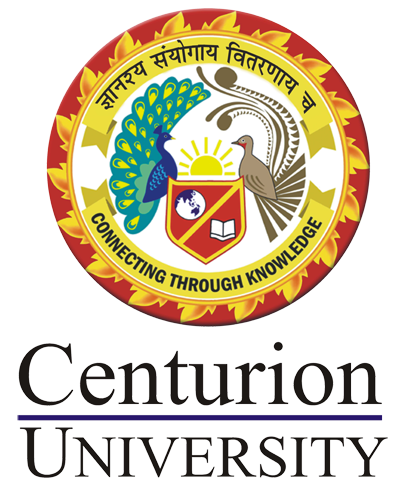CUTM 2314 FORENSIC CHEMISTRY
CUTM 2314 Forensic Chemistry
Course Attendees
Still no participant
Course Reviews
Still no reviews
Course Credit: 3+2+0
Course Objective
After studying this paper the students will know
- The methods of analyzing trace amounts of petroleum products in crime scene evidence.
- The methods of analyzing contaminants in petroleum products.
- The method of searching, collecting, preserving and analyzing arson evidence.
- The classification of explosives, including the synthesis and characterization of representative analogs.
- The significance of bomb scene management.
- The techniques of locating hidden explosives.
Course Outcome
| SNO | DESCRIPTION | PO MAPPING |
| CO1 | Understand the methods of analysing trace amounts of petroleum products in crime scene evidence. | PO1, PO2, PO5, PO11, PO12 |
| CO2 | Understand the classification of explosives, including the synthesis and characterization of representative analogues. | PO1, PO2, PO5, PO11, PO12 |
| CO3 | Understand significance of bomb scene management. | PO1, PO2, PO5, PO11, PO12 |
Course Syllabus:
Unit I: Petroleum and Petroleum Products
Distillation and fractionation of petroleum. Commercial uses of different petroleum fractions. Analysis of petroleum products. Analysis of traces of petroleum products in forensic exhibits. Comparison of petroleum products. Adulteration of petroleum products.
Unit II: Arson
Chemistry of fire. Conditions for fire. Fire scene patterns. Location of point of ignition. Recognition of type of fire. Searching the fire scene. Collection and preservation of arson evidence. Analysis of fire debris. Analysis of ignitable liquid residue. Post-flashover burning. Scientific investigation and evaluation of clue materials. Information from smoke staining.
Unit III: Explosives
Introduction, Classification of explosives – low explosives and high explosives. Homemade explosives. Military explosives. Blasting agents. Synthesis and characteristics of picric acid, TNT, PETN and RDX. Explosion process. Blast waves. Bomb scene management. Searching the scene of explosion. Mechanism of explosion. Post blast residue collection and analysis. Blast injuries.
Unit IV: Narcotic Drugs & Psychotropic Substances
Definition of narcotics, drugs and psychotropic substances. Broad classification – Narcotics, stimulants, depressants and hallucinogens. General characteristics and common example of each classification. Natural, synthetic and semi-synthetic narcotics, drugs and psychotropic substances. Designer drugs. Tolerance, addiction and withdrawal symptoms of narcotics, drugs and psychotropic substances Crime scene search for narcotics, drugs and psychotropic substances – searching a suspect, searching a dwelling, searching a vehicle. Testing of narcotics, drugs and psychotropic substances. Presumptive and screening tests for narcotics, drugs and psychotropic substances. Microcrystalline testing of drugs of abuse
Unit V: Analysis of Beverages
Introduction, Alcoholic and non-alcoholic beverages and their composition, Definition of alcohol and illicit liquor. Alcohol and prohibition, Consequences of drunken driving, Breath analysis, blood alcohol analysis by GC-HS.
Analysis of Beverages- Analysis of alcoholic beverages as per BIS and PFA Act, Detection and determination of ethanol, furfural, organic acids, aldehydes, chloral hydrate, methanol and ethylene glycol in liquors.
Unit VI: Detection of Food Adulteration
Food adulteration: Introduction, Prevention of food adulteration, analysis of samples taken under food adulteration act
Unit VII: Case Studies
Famous case studies related to forensic chemistry.
Session Plan
Session 1
Distillation and fractionation of petroleum. Commercial uses of different petroleum fractions
https://www.geeksforgeeks.org/fractional-distillation-of-petroleum/
Session 2
Analysis of petroleum products
https://www.slideshare.net/RahulVerma893/analysis-of-petroleum-products
Session 3
Analysis of traces of petroleum products in forensic exhibits
https://www.slideshare.net/jeremiah_justus/forensic-chemistry-petroleum-products
Session 4
Comparison of petroleum products. Adulteration of petroleum products
Session 5
Chemistry of fire, conditions of fire
Session 7
Location of point of ignition
Session 9
Searching the fire scene, collection and preservation of arson evidence
Session 10
Analysis of fire debris
https://dps.mn.gov/divisions/bca/bca-divisions/forensic-science/Pages/trace-fire-sample-prep.aspx
Session 13
Scientific investigation and evaluation of clue materials
Session 14
Information from smoke staining
Session 15
Introduction, classification of explosives- low explosives and high explosives
Session 18
synthesis and characteristics of picric acid
Session 22
Bomb scene management, searching the scene of explosion
Session 23
Mechanism of explosion, Blast Injuries
https://www.nps.gov/parkhistory/online_books/npsg/explosives/Chapter2.pdf
https://blastinjuryresearch.health.mil/index.cfm/blast_injury_101/what_is_blast_injury
Session 25
Definition of narcotics drugs and psychotropic substances, Broad classification- Narcotics, stimulants, depressants and hallucinogens
Session 26
Natural, synthetic and semi-synthetic narcotics drugs and psychotropic substances
Session 27
Designer drugs, tolerance, addiction and withdrawal symptoms
https://nida.nih.gov/publications/drugs-brains-behavior-science-addiction/drug-misuse-addiction
Session 28
Crime scene search for narcotic drugs and psychotropic substances
https://www.ojp.gov/ncjrs/virtual-library/abstracts/searching-drugs
Session 29
Presumptive and screening tests for narcotics drugs and psychotropic substances
Session 30
Micro-crystalline tests for drugs of abuse
Session 31
Introduction, alcoholic and non alcoholic beverages and their composition
https://apeda.gov.in/apedawebsite/SubHead_Products/Alcoholic_and_Non_Alcoholic_Beverages.htm
Session 32
definition of alcohol and illicit liquor
https://www.drinkiq.com/en-gb/about-alcohol/what-is-illicit-alcohol-and-why-can-it-be-so-dangerous/
Session 34
Consequences of drunken driving, breath alcohol analysis
https://vakilsearch.com/blog/drunk-driving-laws-and-punishment-in-india/
Session 35
Blood alcohol analysis by GC-HS
Session 36
Analysis of alcoholic beverages as per BIS and PFA Act
Session 39
Analysis of samples taken under Prevention of Food adulteration act
Session 40
Famous case studies related to Forensic chemistry
https://www.slideshare.net/PALASHMEHAR/forensic-chemistry-case-study
Suggested Readings
- J.D. DeHaan, Kirk’s Fire Investigation, 3rd Edition, Prentice Hall, New Jersey (1991).
- A.A. Moenssens, J. Starrs, C.E. Henderson and F.E. Inbau, Scientific Evidence in Civil and Criminal Cases, 4th Edition, The Foundation Press, Inc., New York (1995).
- R. Saferstein, Criminalistics, 8th Edition, Prentice Hall, New Jersey (2004).
- W.J. Tilstone, M.L. Hastrup and C. Hald, Fisher’s, Techniques of Crime Scene Investigation, CRC Press, Boca Raton (2013).
- S. Ballou, M. Houck, J.A. Siegel, C.A. Crouse, J.J. Lentini and S. Palenik in Forensic Science, D.H. Ubelaker (Ed.), Wiley-Blackwell, Chichester (2013).
Practicals
- To carry out analysis of gasoline.
- To carry out analysis of diesel.
- To carry out analysis of kerosene.
- To prepare a case report on a case involving arson.
- To carry out analysis of explosive substances.
- To separate explosive substances using thin layer chromatography.
- To prepare a case report on bomb scene management.
- To carry out analysis of Narcotics & Psychotropic substances.
- Analysis of Alcoholic and Non Alcoholic Beverages.
- Analysis of food samples for adulteration.

